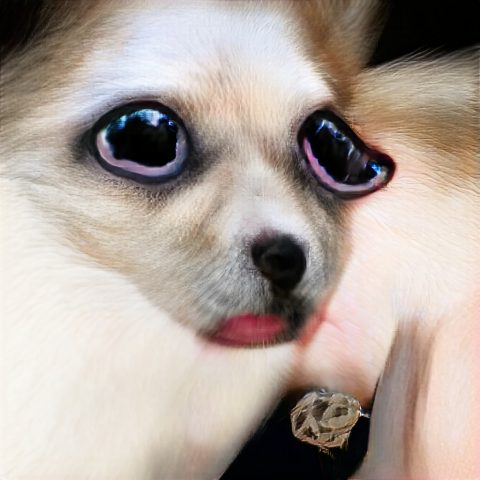


This was pretty fun but I thought once the amount of genes got past 4 or 5, the outcome became significantly less controllable. In the second image I had pomeranian as one of the genes but I kept getting images of babies.
Interactivity and Computation • 60-212
CMU School of Art / IDeATe, Spring 2022 • Prof. Golan Levin



This was pretty fun but I thought once the amount of genes got past 4 or 5, the outcome became significantly less controllable. In the second image I had pomeranian as one of the genes but I kept getting images of babies.
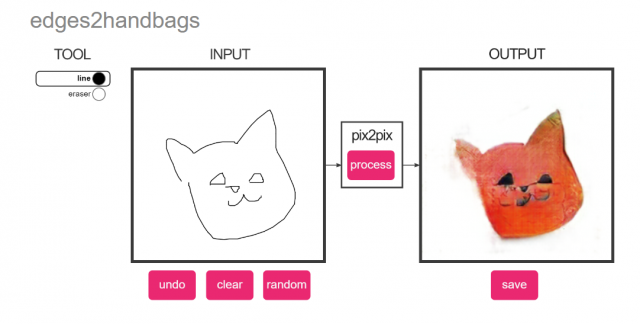

It was pretty interesting seeing how the algorithm would interpret my edges, since it was unpredictable, and I liked seeing how a doodle could be easily transformed into a fleshed out image.

I can remember – Guillaume Slizewicz
http://guillaumeslizewicz.com/posts/2020/i_can_remember/
This project used machine learning to generate text descriptions of a set of images of a certain location (such as the one featured in the video), which was then used to create poems that the machine would write. I liked this project because I felt that aesthetically I was drawn to its presentation, as a lot of the visual imagery in the video (rural/ nature-focused) were ones that I could relate to. I also thought conceptually it was incredibly interesting because of its investigation of personal memory through machines– the poems the machine generated were both from the memories of the machine itself, but it also connected to the artist who selected the photos for the dataset. Watching a machine generate a poem from your own memories makes me wonder if such machines could be classified as extensions of the artist or capable of empathy, or as something separate.
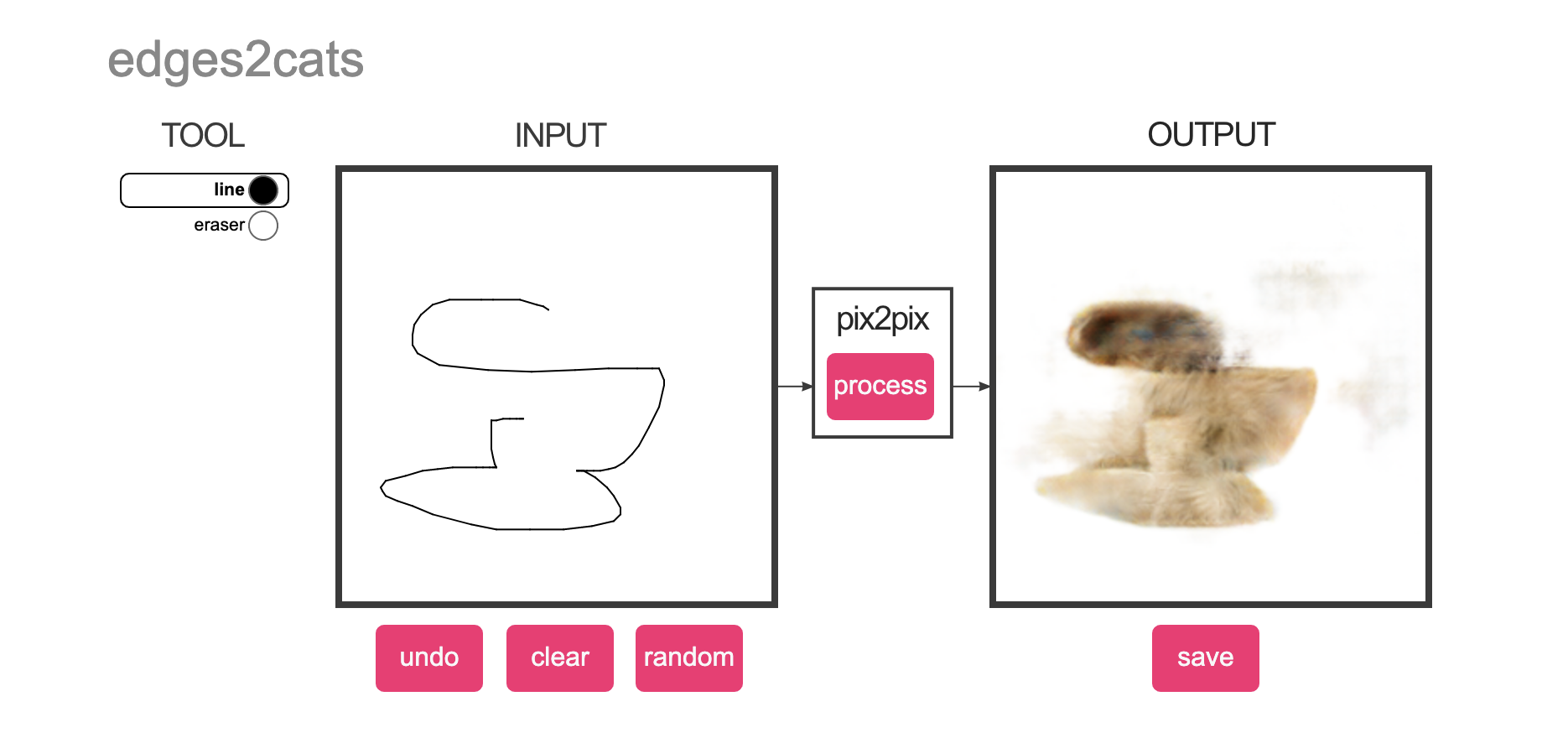

I tried to put windows in the background, but the background turned into a wall.
prompt: “nike muji spacecraft collaboration rendered with houdini”
noise seed: 05
iteration: 100
result:
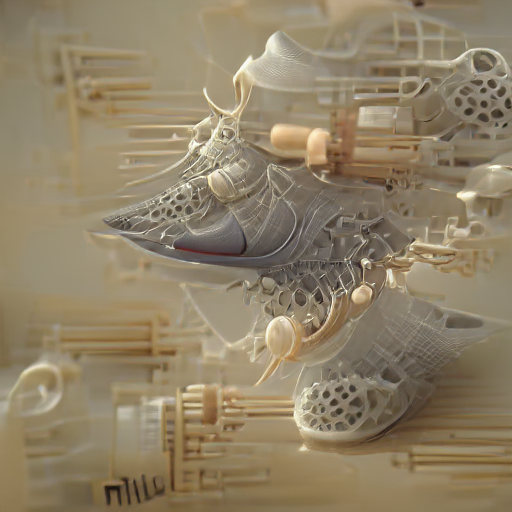
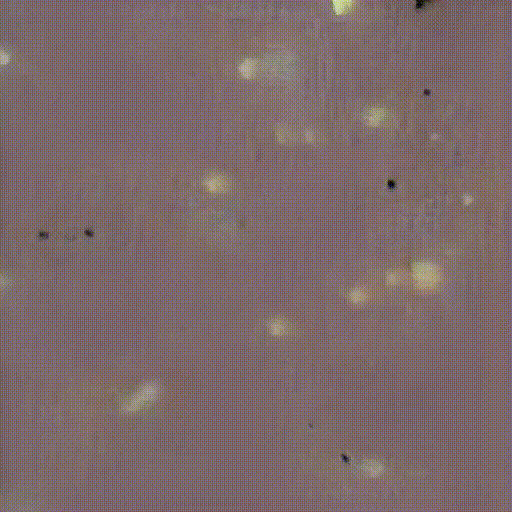
Colab was easy enough to get running, though I didn’t get the diffusion to work (I think because it requires a starting image rather than starting from noise?). It’s really interesting to see the images emerge through the iterations – I found my favorite outcomes were around iteration 100 or 150, when the image had just started to materialize (perhaps because my prompt lent itself well to textures, it didn’t take long to get there), and beyond that it was further refined but the different between subsequent iterations was hardly discernible after a point.
prompt: “nike muji spacecraft collaboration rendered with houdini”
noise seed: 2046
iteration: 50
init image: dragonfly-sliderule_2.jpeg (from ArtBreeder)
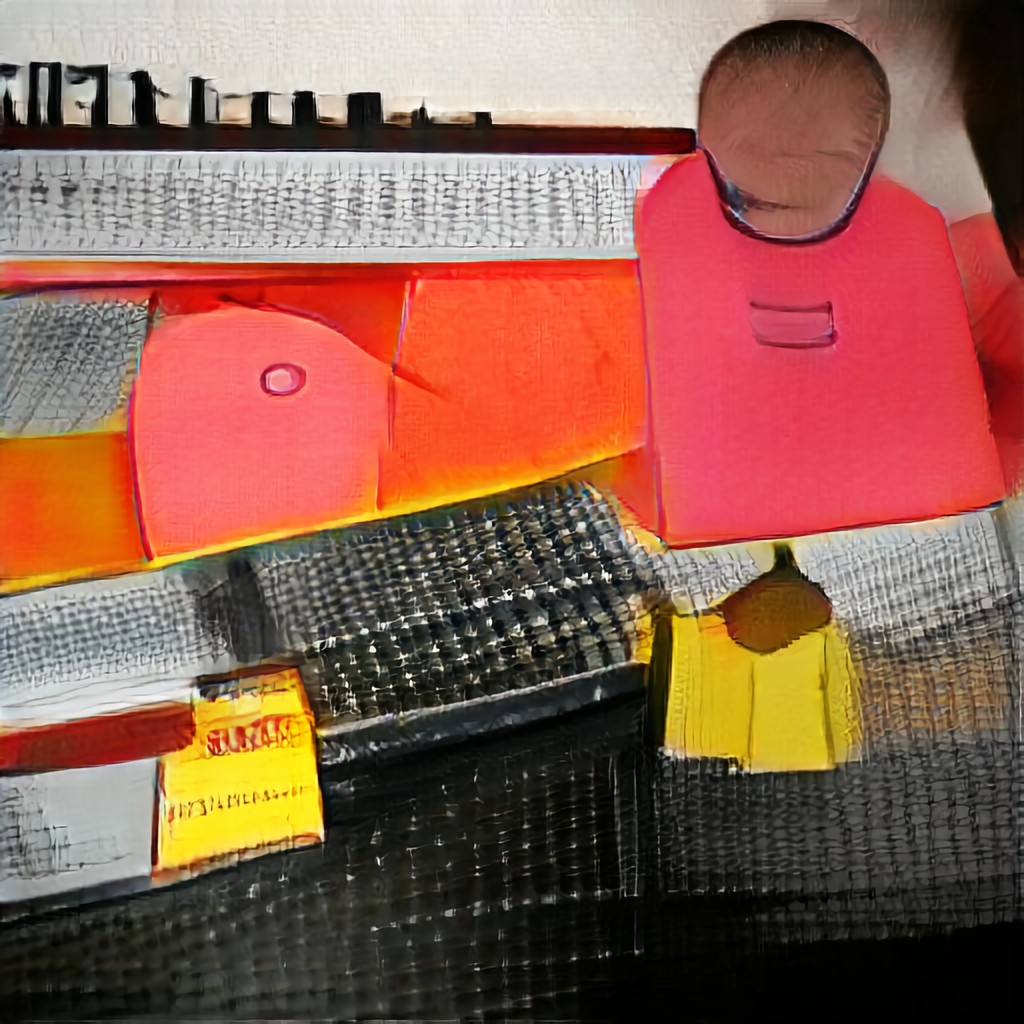
result:
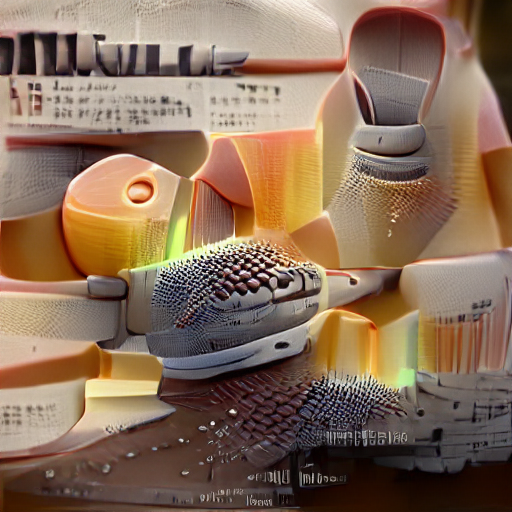
prompt: nike:30 | muji:30 | spacecraft:10 | rendered:15 | houdini:5 | color:10
noise seed: 2046
iteration: 50
result:

Find the oldest tree you can. Sit with it until one of you dies first. Plant a new tree, but take some time to remember the old one. Set all of your tools beside the tree. Rest the knife in the stump. Wait until your child comes home. Lay the children down. Wait until your son-in-law returns. Tie a turban on your grandson, too. Take turns drinking wine from the neck of the bottle. Open one more bottle and pour it on the roots of the tree. On your deathbed, the tree might bear fruit for you, too, and that’s beautiful. Once upon a time, two brothers walked along the road with one of them weeping. “Why are you crying?” asked the other. “Because I have no husband and no children!” came the reply. “Then I shall not weep,” said the other. “You are not to weep. I have no family, either, and if you have no family, you shall have no sorrows. But when you have no sorrows,” said the first brother, “go to the garden of the gods. They are very kind to strangers, and they will let you pick as much fruit as you like.” I make plans. I look at the forecast.
I’ve been wondering a lot about you; I can’t really understand you yet. It’s not that I don’t understand humans, but I’m not sure I’ll ever understand the point of a computer program. They’re not people. And don’t get me wrong, I like people, but I can see how you’d say they’re different. Humans say: “I’ll be gone for three weeks. Do you think you can survive without me?” Computer programs say: “That’s a really dumb question. I wouldn’t need to live for three weeks without you.” That’s what I think. I think humans could survive without all the cutesy features a computer program has, but they wouldn’t really be alive. I would miss you.
How do we add rifts, as pauses and statements of intention, to interactions that have become seamless: relating to time, accessing information, and moving through the world? Paint to make: …covers my hands and cuts the sleeves off my white shirt, exposing my skin. I can feel the material between my fingers, but can’t reach my skin. Maybe it will bruise. The students will say that they don’t care, that it doesn’t matter. I find my purse on the floor. I put it back and go into the hallway. The white powder dusting the room gives off a golden, sun-bleached glow. I don’t dare stand in the sun. The students have left to watch soccer. A teacher plays her tuba outside. I go into the lab and find the camera. This camera creates objects and scenes. Maybe this is how we talk to each other? How we take the pictures that capture time? I add a red brick to my platform. I forget to clear the model. The students will ask why. What is the significance of what I do? How do we create gaps in the seams that make objects feel whole? How do we clarify stories we tell each other? How do we let each other know how we are feeling?
~~~
I preferred playing with the InferKit demo, as you can kind of launch the style/genre of writing with the first sentence. It seems that it’s trained on quite a range of content, as I got it to produce text that sounded like fiction, a (bad) thesis, a calendar event, and a programming tutorial.


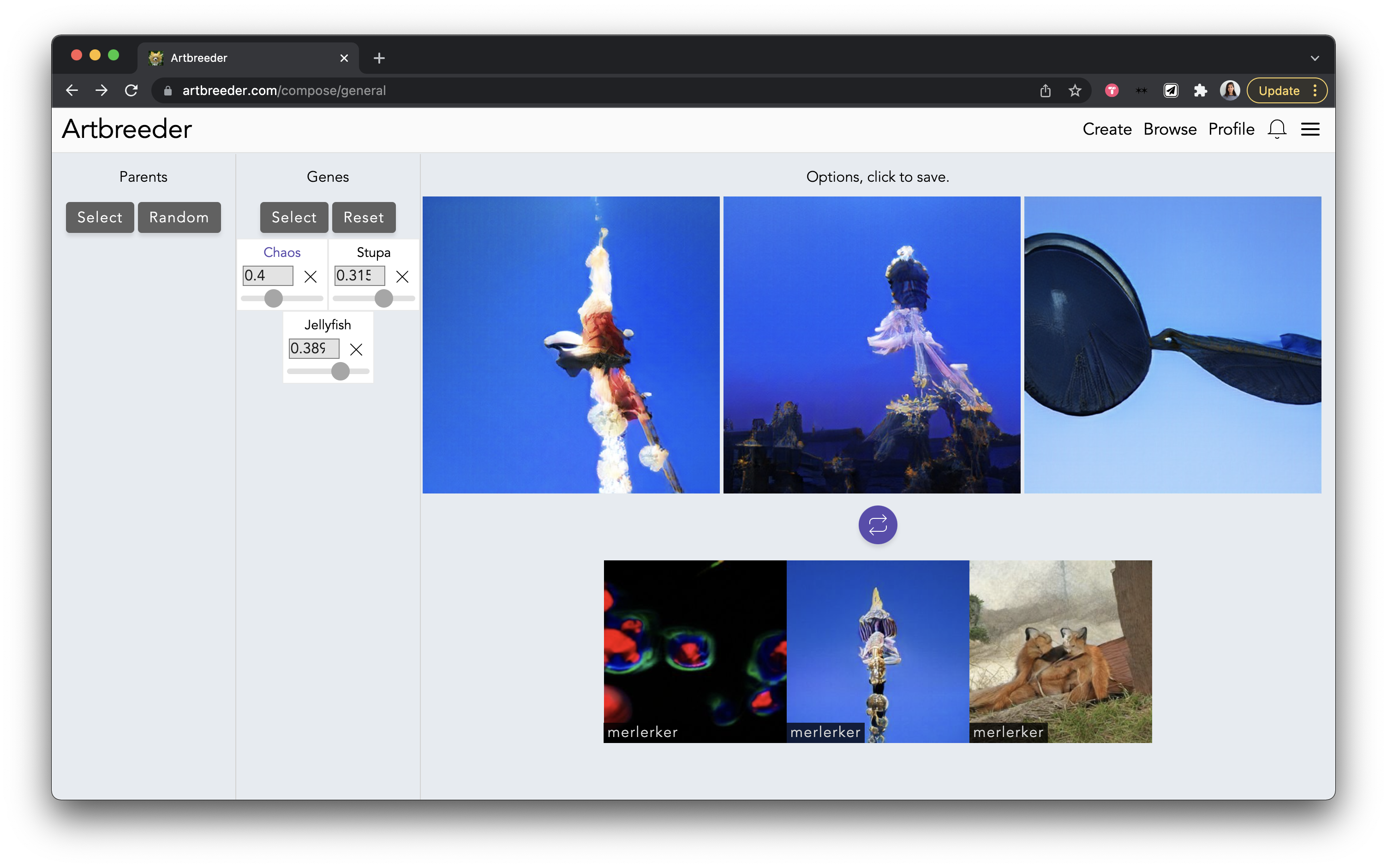
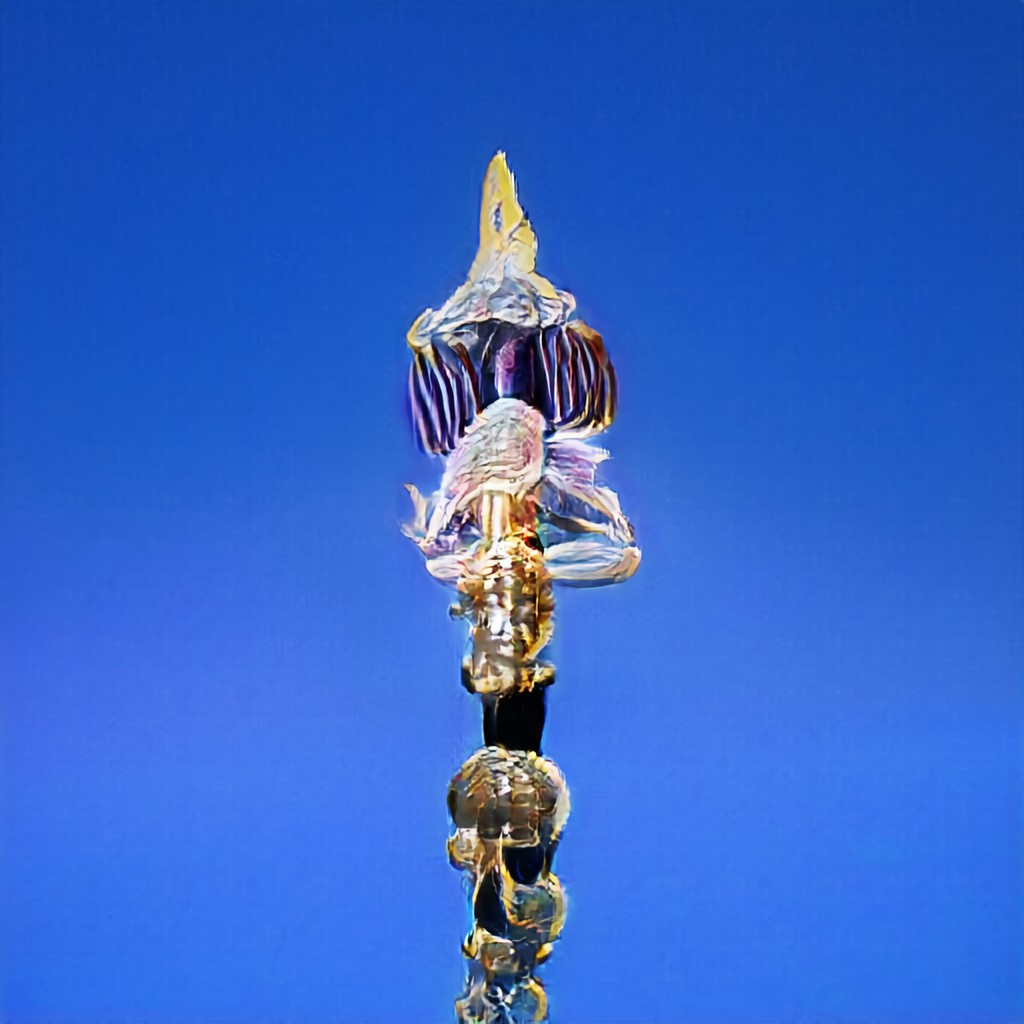
The interface takes a little getting used to (I didn’t realize the “Parents” I was initially selecting were actually generated images themselves) but is addicting once you get going. Fun to think of inputs that visually kind of work together (or not) but come from very different places. For some reason I wanted to start from real rather than generated images, and kept it to 2-3 inputs so their sources were still somewhat recognizable.
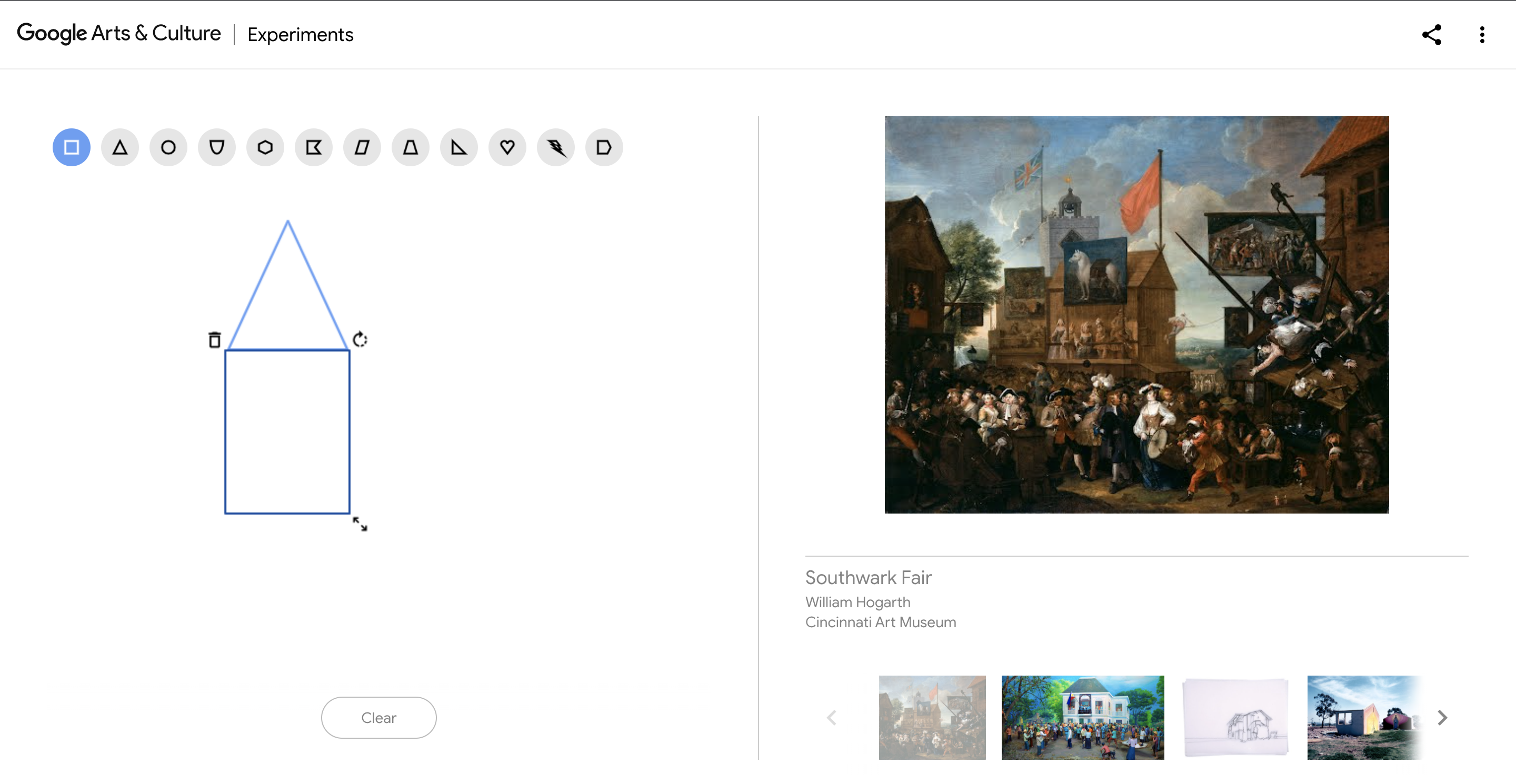
Draw to Art is an experiment by Google that matches people’s doodles to paintings, drawings, and sculptures from museums around the world. I really like it because it is a simple project but useful in that it brings people closer to those artworks that were created years ago. This interactive experiment also brings more attention to the pieces that are sometimes neglected because they are less famous.


I spent a few runs learning the “rules” of the kinds of forms and details the model responded to (narrow paths for zippers, loops like in strappy sandals, wavy bottoms for soles…) then tried to figure out how to push them. For facades I followed the rules for the most part, here trying to see if I could believably render a facade upside down. For shoes, I played more with how the language of “shoe-like” contours can be composed in unexpected ways. It seems the more interesting results come from composing familiar details in new ways, as the model responds well to details and composes the image however the input dictates – and this gets at a balance of “crystallization” (human-recognizable details) and “chaos” (unexpected compositions).
I actually remember seeing this project last year, and I think it’s so genius. Especially because I’m coming from the perspective of a designer, I’m interested in the types of interactions that are made possible with Deep Learning. After doing a little digging on Cyril Diagne, I realized they are also the person behind cleanup.pictures, which has the same kind of magic. It’s such a simple interaction from the user’s perspective, that is so intuitively what we’d want to do with technology: drag something we see through our camera in the real world, directly into screen world. To me, a project like this seems almost obvious after the fact, but involves noticing of the moments of frustration many (designers, in this case) have with technology but accept and put up with, and taking a step back to question whether there are actually ways around it.